

MB&F Mad Gallery, a boutique from beyond.
Once again, MB&F is the main subject of the winter-buzz, when the new watchmaking strives to build a concept and a story around its creations, Max Busser & Friends appear as Stakhanovites of the alternative-horological concept.
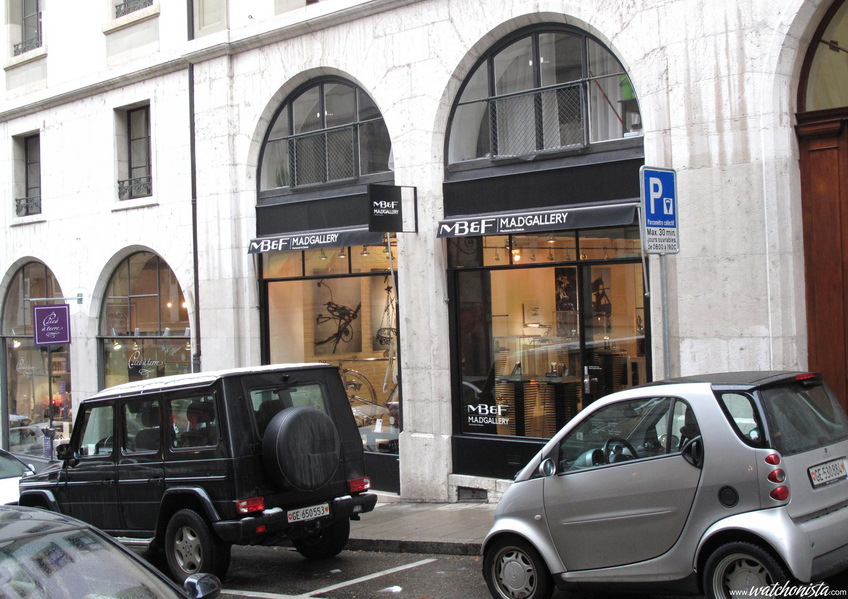
So MB&F just opened their….Uh, how shall I put it ?
New public space ? Adult garden (even though toys are for sale as well ) ? Mini World-fair?
Talking about a boutique would be very simplistic, much as selling watches is a pretext.
It would also be inaccurate to talk about an art gallery, although it is the closest match;
Let’s say it is an art gallery, minus one zero and real workmanship.
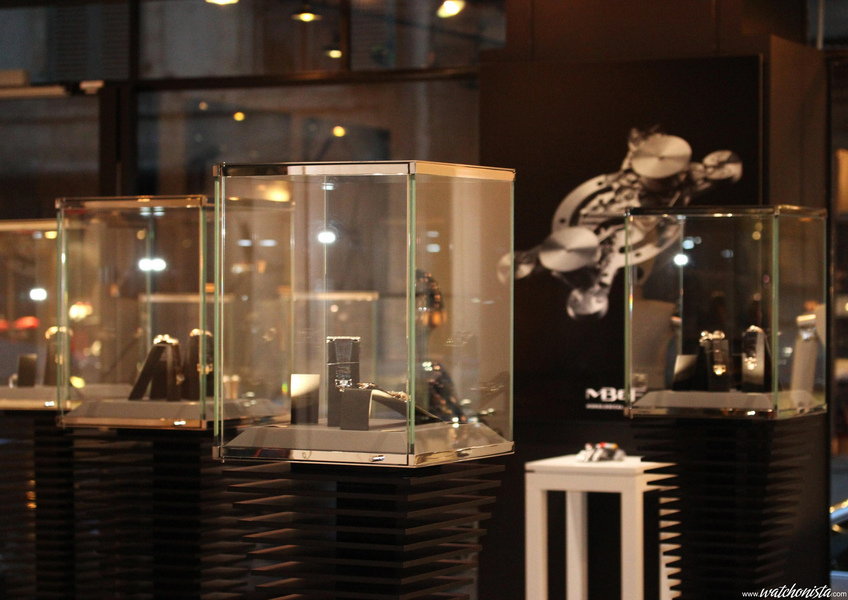
Anyway, after having revolutionized the wristwatch design, MB&F creates a UMO (Unidentified Machines Outlet), the designer’s boutique together with the Mad Gallery.
So, a boutique for a single brand, of course, but above all, a gallery dedicated to mechanical, electro-mechanical, or even robotic objects.
Generally speaking, to wander around the Mad Gallery is to wander in a deluxe geek’s living room, where the heaps of devices take us back to as many worlds as there are genres in Science-fiction.
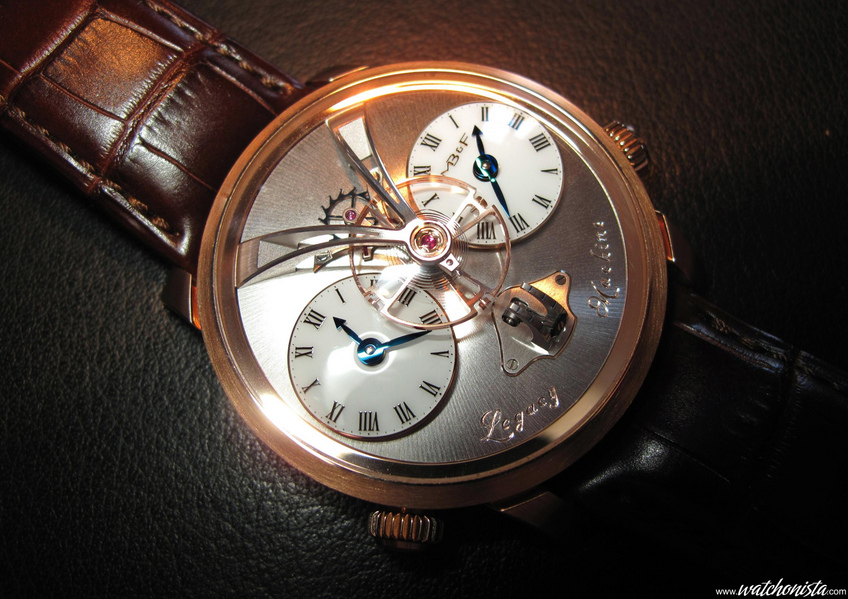
MB&F’s workshop is small, (The Friends complete a major part of the work beforehand), and anyway, to tour a factory, or even to break down the manufacturing processes, is to ruin some of the magic of the end product.
In fact, most of the watchmaking brands don’t have a showroom, or any dedicated space where one can take the time to reconstruct the relationship with the watch.
This MG opens up new perspectives regarding the interior design of watch workshops.
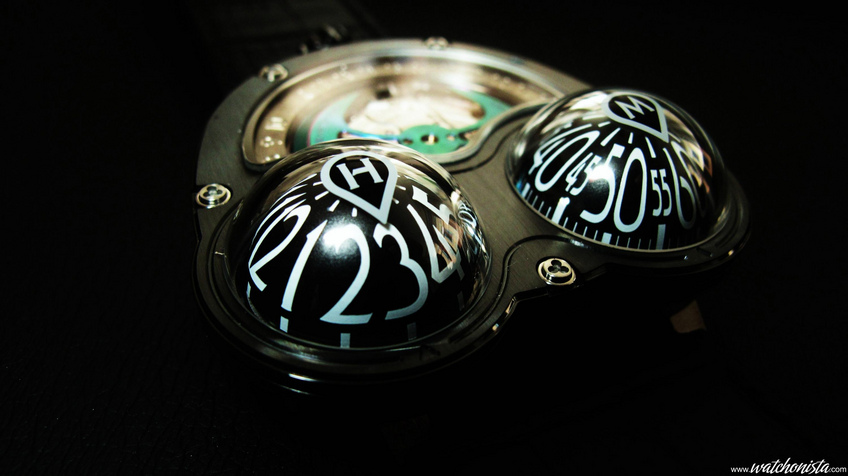
Furthermore, it is the negative image (and not the opposite) of a place like the Patek museum.
Whereas a brand’s museum is designed to talk about legacy, inspired by past horological masterpieces, the MG is there to talk about the future, about concepts, to enhance the aesthetical and technical universe of MB&F, a concrete casting of MB&F’s blog, “A parallel world”.
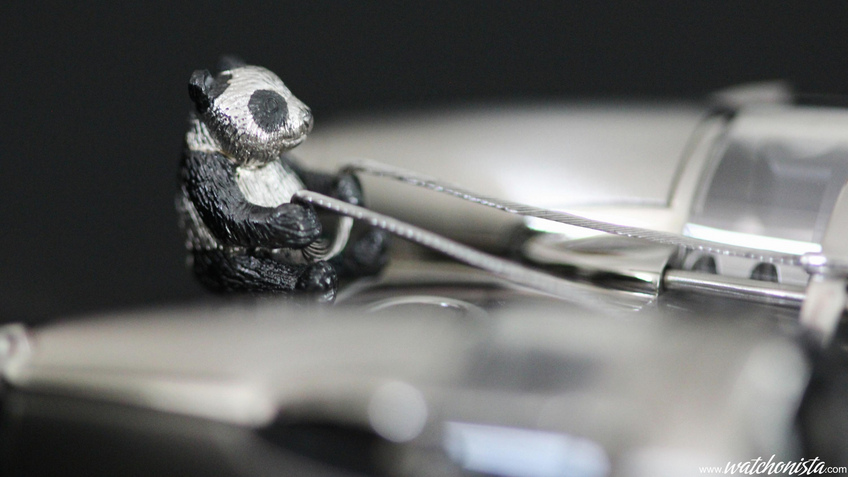
The usual horological « perennial » about the independent brands, calls their creations UFOs, or UHO, as it is intended for the purists of watchmaking ufology.
From De Bethune to Konstantin Chaykin, Urwrek, Hautlence or Vianney Halter, the inspirations from science-fiction are more or less assumed.
For that matter, much as they are reluctant to admit it, creators often make do with the inspiration from trendy ideas.
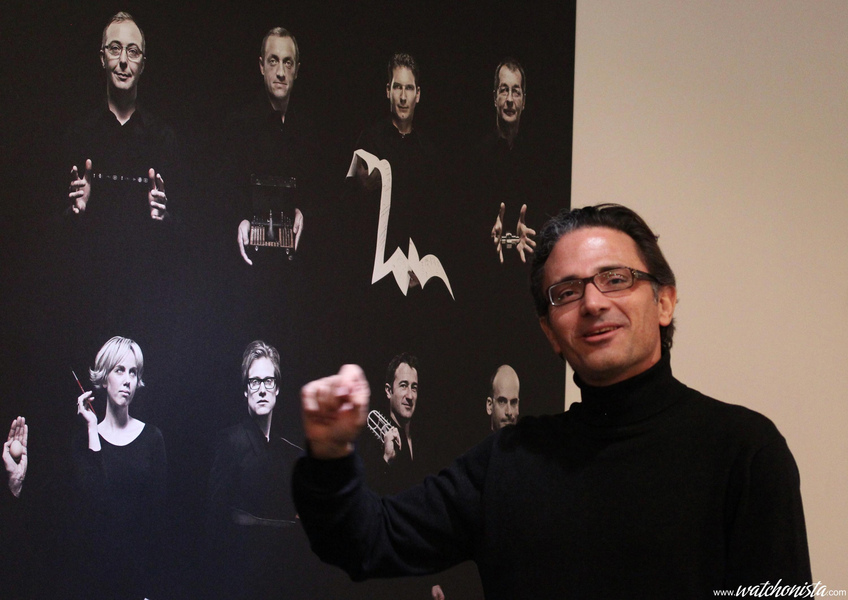
Likewise, when one talks with Max Busser or Charris, the urge to have a blast and childhood memories prevail over SF trends…
However, MN&F stuck to all the main SF trends from the last 15 years (particularly from French-Belgian comic books), with a regularity worthy of a marine clock.
Cyberpunk, Space-Opera, then Steampunk with the LM1 and most recently, Uchronia from the WWII with the HN4 Razzle Dazzle and Double Trouble.
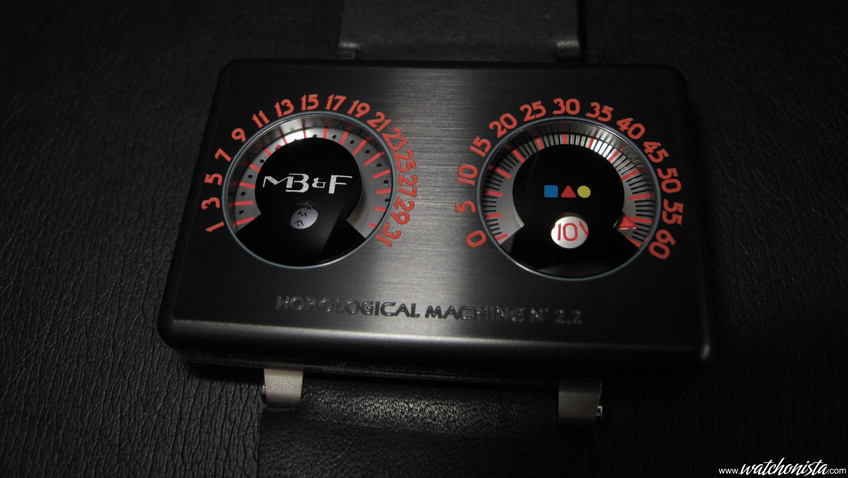
Despite certain denies from many of the French academic, Science-Fiction is the major literary style of the 20th century.
The eccentric style of its authors, like Philip K Dick or Franck Herbert, was never praised by the pompous literary shows. The technological environments of their books conceal hot topics, pollution, totalitarianism, Cyber-surveillance, neo-tribal delinquency, nothing is neglected by SF.
However, SF is not only hot topics; it is also fundamental philosophical thinking.
One of the recurring themes is the link between humankind and tools; the most famous avatar of this reflection is “2001 A Space Odyssey”.
In Kubrick’s movie, a disembodied machine, HAL, progressively takes control, and the human hero manages to defeat the supercomputer with the simplest of all tools, a screwdriver.
Yet, this reflection about the tangibility of the Tool is at the core of Max’s work. To follow through with this approach and with the promotion of mechanical concepts, Max created this MG, where he sells machines.
Ironically, or even logically, if one wants to perfect this demonstration;
The only item equipped with electronics in the gallery is a mimetic robot, a form of ultimate personification of computers!

Paradoxically, the most outstanding series of non-horological objects is not mechanical, but electrical: the lamps from the creator Franck Buchwald.
He creates “light producing machines”. The design is borrowed from the SF from the 20’s-60’s period, from Metropolis to Flash Gordon, Captain Future and masses of Z series like Ed Wood’s works.
The quality of fabrication of the « Machines Lights » makes us think instinctively of the largest watchmaking brands, the 200 parts that comprise a lamp are cutout, chemically processed and then manually assembled, with a passion and a care that would make some famous names of watchmaking shudder.
The same causes leading to the same consequences, the result immediately triggers a compulsion that a JlC Atmos collector would not disavow.
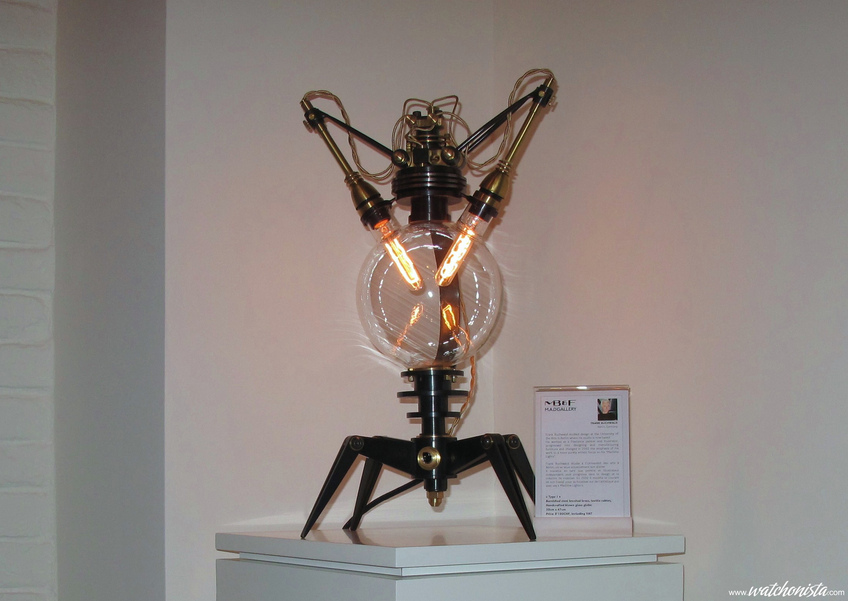
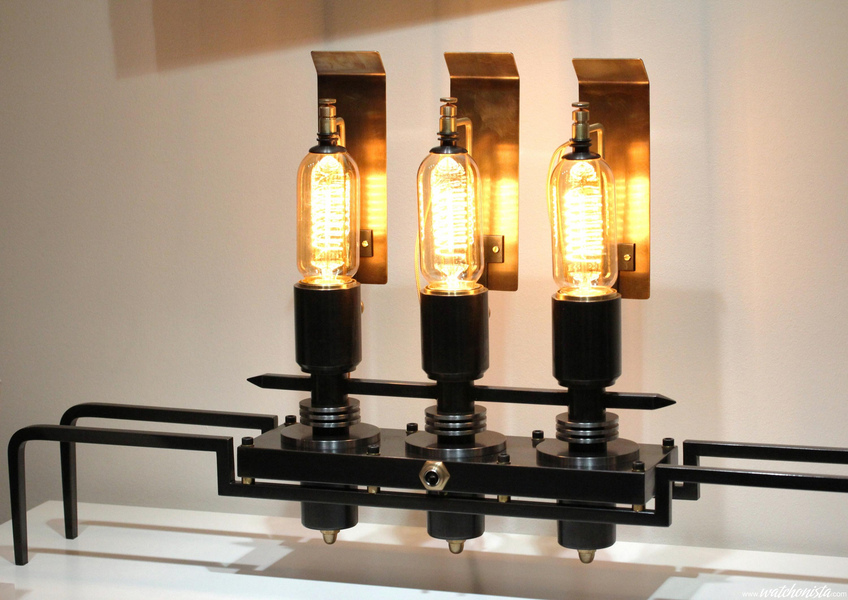
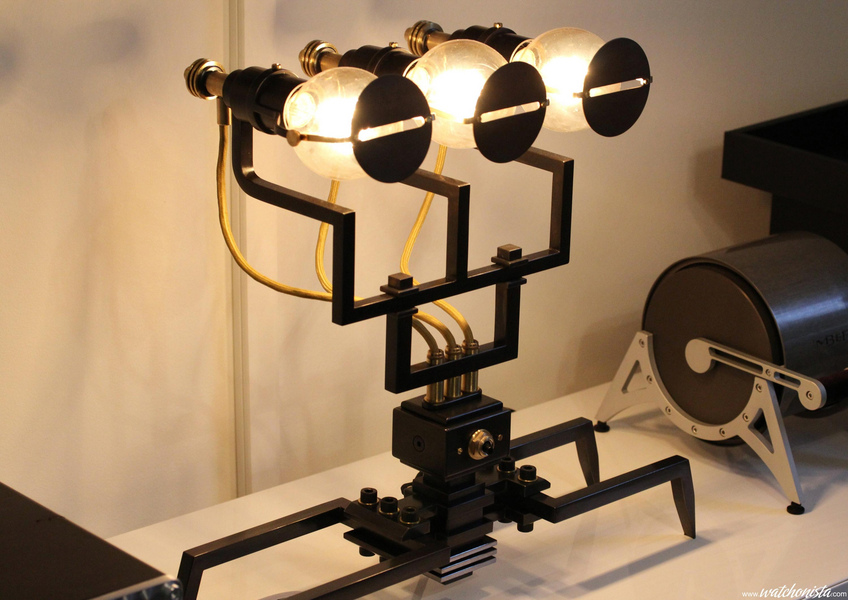
In this boutique, one can find a fauna of extraordinary mechanical objects, which are waiting for their Darwin to categorize them properly.

From the most basic, like the Citroen DS toy car to introduce your little junior to the “De Gaulle” comfort of the hydropneumatic suspension:
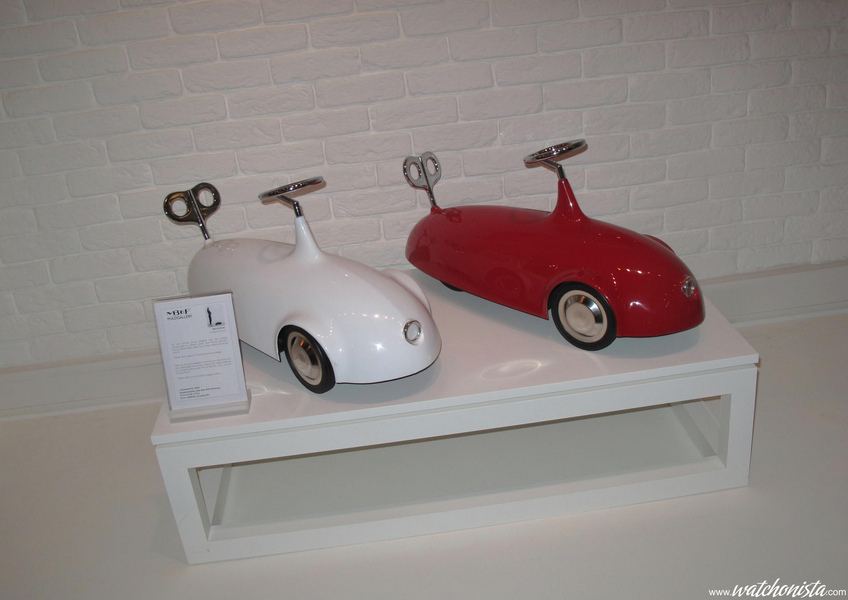
To the most vital, like the “clapping flowerpot”, that enables you to attend all the horological cocktail parties held in Geneva without risking a wrist tendonitis. (Can we expect a brown-nosing music box?)
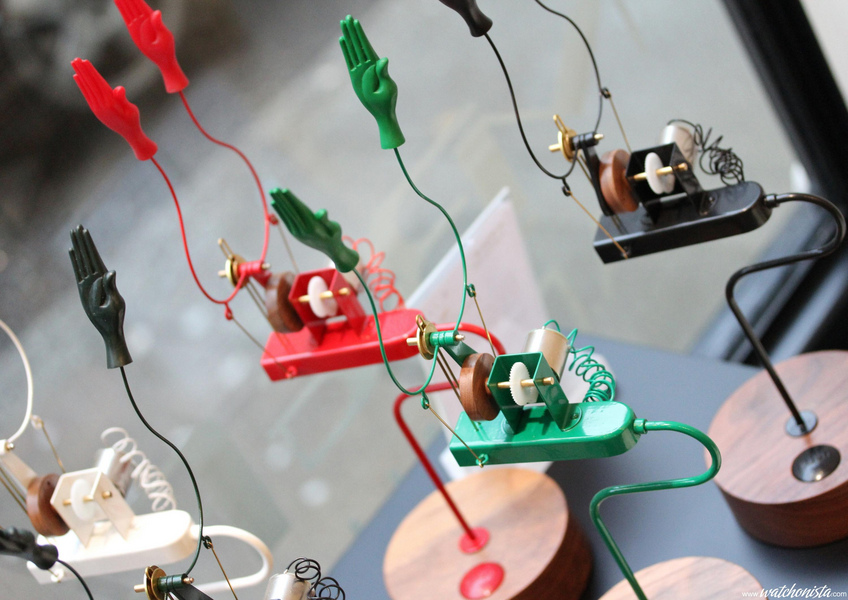
The famous Safe Dotling Colosimo, the most expensive watch winder in this quadrant of the galaxy. With this thing and a Partagas Lusitania stuck in your mouth, you could think of yourself as the CEO of the UBS; indispensable.
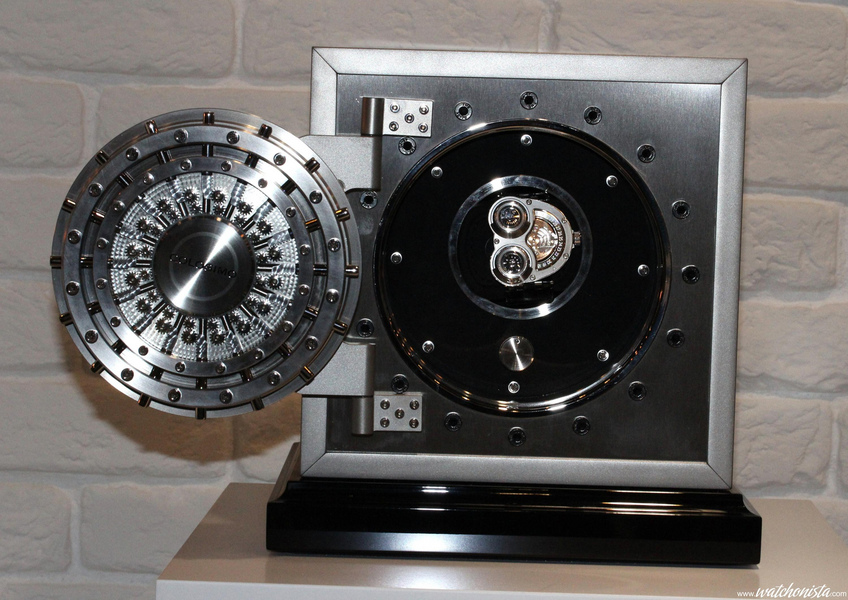
In my article on the PAM382 « Gonzo », I quoted the title of a book by John Zerzan, « Future Primitive ».
The second time I went to the MG, I saw this fabulous vintage copper-hat made of bronze! “Future Primitive” is even more suitable in this case than it was for the Bronzo.
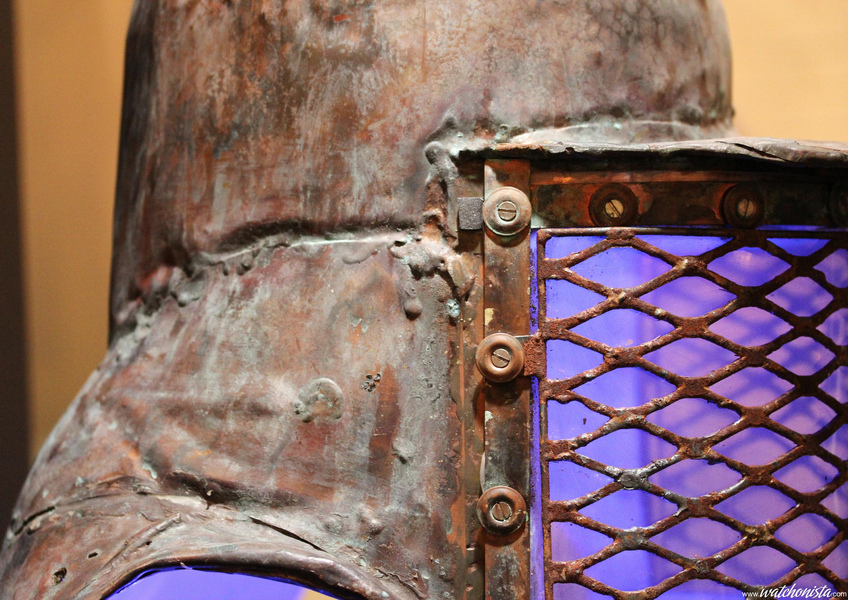
As a matter of fact, this neo-horological space is the mechanism (hohoho) of the unexpected success of mechanical watchmaking applied to other domains.
It corresponds to the need to put some tangibility back into our lives.
When most of the economy is virtualized, where 95% of the occidental population never grew a tomato or replaced a sparkplug on an engine, it is vital to regain control of our daily life.
However, beyond the necessity to regain control, we are also trying to find a rationalization for the high prices, because the most expensive machines in the gallery, contrary to many trendy shops, benefit from a craftsmanship and a level of finishes that one could have considered as lost forever.
Therefore, it is a back to the basics of art, themes, concepts, and to the best offer in terms of quality.
But watch out, it is not Art. It is just art-isanship.☺
